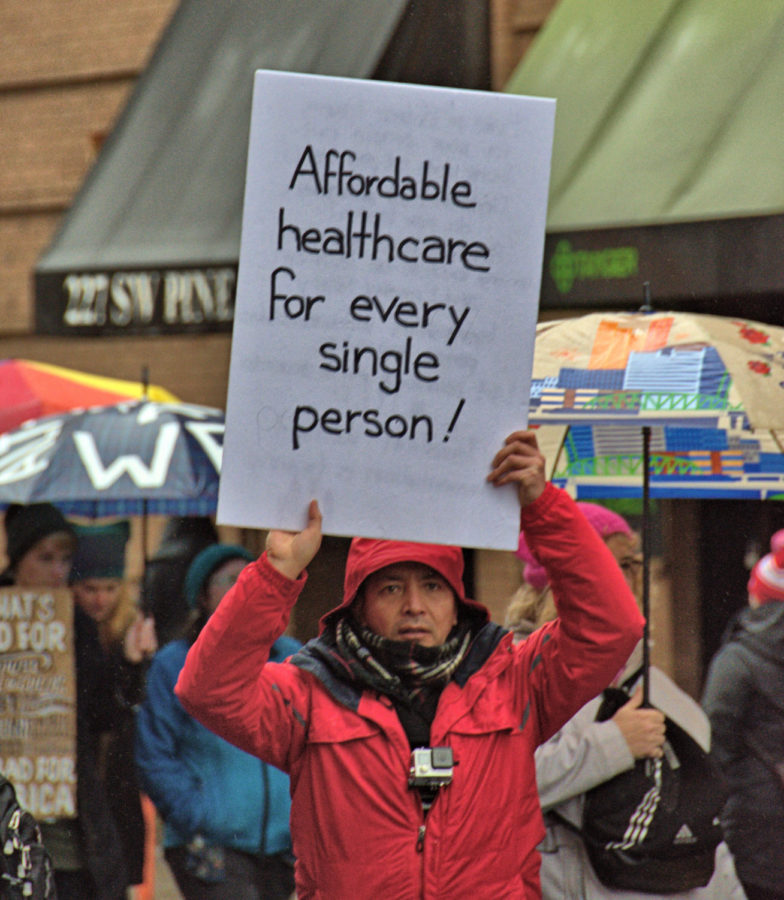Editorial: ‘Obamacare’ in the era of Trump and COVID-19
June 30, 2020
With limited access to testing alongside the culmination of COVID-19 cases growing in some states, obtaining affordable and accessible health care is more vital than ever, especially to millions of Americans who may need to rely on emergency services if they do not have appropriate health care insurance.
This past week, the Trump administration asked the Supreme Court to end “Obamacare” once and for all.
The argument: since the mandate to charge a penalty for those who do not have insurance has been struck down, then the rest of the Affordable Care Act (ACA) cannot stand on its own. “Obamacare” is not without its problems; however, ending it during the pandemic is wrong and shortsighted.
According to the Centers for Disease Control and Prevention (CDC), the total cases of COVID-19 stands at 2,545,250, with 41,075 new cases from the previous day (at the time of this editorial) in the United States. A total of 126,369 people have died of COVID-19 — that’s 346 deaths per day since the CDC started keeping track of deaths in the U.S.
What is the Affordable Care Act?
The Affordable Care Act (ACA) is a health care reform law passed by Congress and signed by President Barack Obama in 2010. It is also referred to as “Obamacare.” It consists of three goals: affordable health insurance, expansion of Medicaid programs and support of medical innovations to lower the cost of health care for all Americans. These goals would be accomplished through policies that would be rolled out in a period of four years.
It is estimated that over 23 million Americans benefit from the ACA. Some of its most popular elements were the prohibitions for insurance companies. The companies could no longer deny someone coverage because of preexisting conditions or rescind their coverage due to a technicality in their original application after the customer became ill.
It is estimated about 27 percent of the U.S. population under the age of 65 has a preexisting condition, which is about 54 million people in the United States. Before the ACA, these people would have been denied coverage. The insurers were also required to stop putting lifetime limits on how much benefits a customer could receive.
Plans had to offer free preventive care for services such as mammograms and colonoscopies.
Young adults under the age of 26 could also stay under their parents’ insurance plan if they weren’t offered insurance at work.
The Affordable Care Act was monumental in governmental involvement in health care. Insurance companies now have more restrictions and provide more coverage to Americans who need health care insurance. However, the ACA was not perfect.
The cost to enforce “Obamacare” appeared with tax increases and insurance companies did not absorb the costs themselves. Rather, these companies raised premiums other non-ACA plans had. Individuals that could afford health care through work or on their own now saw a rise in the cost of the same or sometimes lesser quality of service they had previously received. Even though there are predictions by some economists that ACA would result in a positive impact economically down the road, it still is expensive to implement the ACA.
There used to be a financial penalty for those who didn’t have insurance, but this portion of the law was removed in 2017 by tax law legislation signed by President Trump. Many people don’t believe the government should be able mandate health insurance for everyone and charge a penalty if they choose not to have insurance for various reasons.
Other major parts of the law still stand today. For example, the popular preexisting conditions regulations are still in place and young people can still stay under the coverage of their parents’ plan.
The Trump administration has been trying to actively dismantle the ACA since Trump took office. On Jan. 20, 2016, Trump issued an executive order to encourage federal agencies to implement administrative powers in order to begin dismantling the ACA while Congress worked on repealing the act. In the successive years, steady progress was created in taking apart the ACA. Reforming “Obamacare” does not seem to be an option for Trump, who repeatedly tweets his plans.
“Obamacare” being a joke and being unconstitutional.
In September of 2017, with the majority of both the House and the Senate, the Republican Party leadership and the Trump administration failed to remove and replace “Obamacare.” As of today, President Trump has yet to put forward something concrete and reasonable to replace the ACA.
There are some parts of the ACA President Trump does like, however. He recently tweeted, “I will ALWAYS PROTECT PEOPLE WITH PRE-EXISTING CONDITIONS, ALWAYS, ALWAYS,ALWAYS!!!”
Yes, we need to reform the Affordable Care Act so it can work for most Americans; however, its removal with no feasible alternative while during a pandemic is unacceptable.
More damage will be dealt while government authorities attempt to figure out how to deal with affordable health care. The millions of lives of Americans should not be a part of the political volley that’s going on in Washington. If the Republican Party wants to replace and repeal “Obamacare” as they have been trying to do for years, they better get their act together and realize during a global pandemic is not the best time to remove health care insurance from over 23 million Americans.
The entire Affordable Care Act can be read here.







